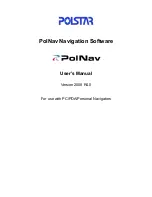
Configuring the anti-virus protection system
31
the user to visit the advertiser's web site. Apart from forced advertising, such
programs considerably load communication channels and increase network
traffic.
Normally it is sufficient to select the standard anti-virus database. The extended
and redundant anti-virus databases are used to ensure a higher data protection
level. The use of more complete databases increases the consumption of system
resources while scanning.
4.7.2. Status-dependent
actions
over
objects
After anti-virus scanning the application assigns to each checked object one of
the following statuses:
•
Clean
– object does not contain viruses.
•
Disinfected
– infected object that was successfully disinfected.
•
Infected
– object contains malicious code.
•
Suspicious
– object contains unknown virus or modified code of a
known virus.
•
Corrupted
– object is damaged.
•
Unit by size
– object too large to be scanned because of the specified
maximum size restriction.
•
Not scanned
– object cannot be scanned (e.g., it is password-protected).
•
Not scanned due to a failure
– object has not been scanned because of
a system error (for example, insufficient privileges to access the object).
•
Unit by type
– object has not been scanned because the application is
configured to skip objects of that type while scanning.
•
Unit by name
– object has not been scanned because the application is
configured to skip objects with such name.
•
Kernel timed out
–
object has not been scanned because the timeout
specified using the corresponding
setting has been exceeded.
An object can be processed using certain actions depending on its status. The
processing settings are available on the status tabs in the
Actions
window. You
can access the window from the
Anti-virus kernel
section located in the left
frame of Kaspersky Anti-Virus window by following the
Actions
hyperlink (see
Figure 8).
















































